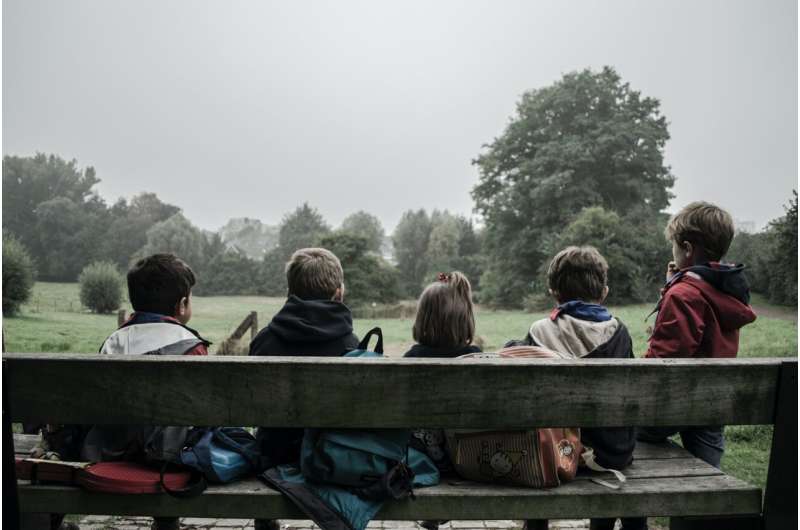Credit: Unsplash/CC0 Public Domain
A study led by the Barcelona Institute for Global Health (ISGlobal), a center supported by the "la Caixa" Foundation, has analyzed, for the first time, the relationship between exposure to different green spaces and oxidative stress in children. The study concluded that greater exposure to vegetation is associated with lower levels of oxidative stress and that this association is observed regardless of the children's physical activity.
Oxygen is essential for numerous biochemical reactions that keep us alive, but its oxidation process generates harmful reactive substances that the body cannot always neutralize quickly or which cause damage that the body is unable to repair. This results in what is known as oxidative stress, which causes aging or even illness.
To date, various studies have shown that having green spaces in the vicinity of one's home has a positive effect on health, especially because greenness improves mental health and encourages physical exercise, thereby reducing the risk of overweight or obesity. But less attention has been paid to the direct effects of vegetation on biological processes, such as inflammation and oxidative stress. This is particularly important for understanding the role that green spaces can play in respiratory and allergic diseases.
Study Analyzed Over 300 Italian Children
In order to determine whether green spaces might be associated with lower levels of oxidative stress in children, and also whether physical activity plays a role in this possible association, the researchers analyzed 323 healthy children aged 8-11 years from five primary schools in Asti, a small city in north-western Italy.
Parents completed a questionnaire on how often their children engaged in physical activity. Oxidative stress was quantified in urine by measuring the concentration of the compound isoprostane. Residential and school greenness were defined according to the Normalized Difference Vegetation Index (NDVI) and vegetated portion was also estimated. Multisite exposures were obtained accounting for NDVI around the children's homes and schools, weighted for the time spent in each location.
Possible Explanations
Several biological mechanisms could explain this direct link between green space and oxidative stress in children. Firstly, "increased exposure to these areas may contribute to children's immune development by bringing them into contact with organisms that tend to colonize natural environments," commented last author Judith Garcia-Aymerich, researcher and head of the Non-Communicable Diseases and Environment Programme at ISGlobal. Secondly, contact with green spaces can increase vitamin D synthesis due to ultraviolet radiation from sunlight. Vitamin D acts as an antioxidant that prevents the negative effects of oxidative stress and inflammation. Finally, vegetation improves air quality in urban areas.
No Effect Found for Physical Activity
Although proximity to green space has been associated with increased physical activity, which in turn affects oxidative stress, the study found no evidence that exercise was involved in the association between green space and oxidative stress.
Garcia-Aymerich concluded that "the short- and long-term health effects of excess oxidative stress are unknown, so we need to conduct further research and support city and public-health strategies that favor greenness."
The research was published in Environmental Research.
More information: Giulia Squillacioti et al, Multisite greenness exposure and oxidative stress in children. The potential mediating role of physical activity, Environmental Research (2022). DOI: 10.1016/j.envres.2022.112857
Journal information: Environmental Research
Provided by Barcelona Institute for Global Health
























